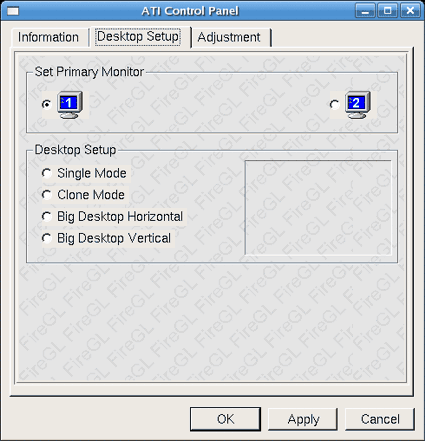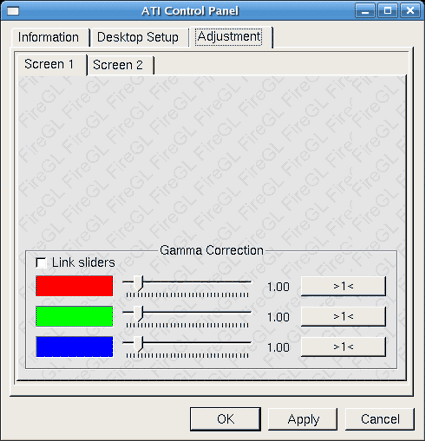ATI and Radeon on Linux
For whatever reason, ATI has kept up its spotty track record in the area of Linux driver development support. The development and release of the newly minted Radeon X1800 series cards in October 2005 went unsupported on the Linux platform for months after that release date. It wasn't until ATI issued Catalyst display driver revision 8.24.8, approximately six months later, that X1000-series Radeon and Mobility cards (including the flagship X1900) became truly accessible to Linux users. As is so often the case, new drivers also possess uncommon potential for programming bugs, missing features, and incomplete functionality. Version 8.24.8 left much to be desired, omitting support for TV-out, and manifesting unsettling instability problems when toggling between console and X server modes, or when resuming activity from a suspended state.
ATI's commitment to Linux driver support takes the form of proprietary FireGL-based fglrx drivers, and a company-supported Linux development team that was formed in 2004. Today, ATI continues to provide FireGL-derived drivers that include both open source and proprietary components. In addition, the results of Linux community efforts to reverse-engineer ATI drivers have been implemented directly into both the X.Org and Mesa libraries, which offers added flexibility to organizations or individuals willing to cope with non-proprietary driver support issues. For those Linux users who require pure open source driver support, ATI suggests the Direct Rendering Infrastructure (DRI) Open Source Project designed for fast OpenGL implementations, or the Utah-GLX Project, an implementation built on the OpenGL and GLX protocols.
One undeniable drawback to the ATI Linux development process is the current dearth of in-depth configuration properties, like those it makes accessible through the graphical interface in its Windows-based Catalyst Control Center. ATI does offer a Linux-native ATI Control Center panel, which delivers a somewhat limited subset of features and capabilities. These are limited enough, however, that we were able to depict the complete set in the three figures that follow.

ATI Control Center displays the current hardware configuration

ATI Control Center enables dual-monitor features where applicable

ATI Control Center provides only gamma correction link sliders
By comparison, ATI's native configuration utility is so feature-rich that it requires considerably more discussion and coverage. It certainly cannot be summarized in three screenshots.
Stay on the Cutting Edge
Join the experts who read Tom's Hardware for the inside track on enthusiast PC tech news — and have for over 25 years. We'll send breaking news and in-depth reviews of CPUs, GPUs, AI, maker hardware and more straight to your inbox.
Current page: ATI and Radeon on Linux
Prev Page Introduction Next Page Radeon and Crossfire on LinuxEd Tittel is a long-time IT writer, researcher and consultant, and occasional contributor to Tom’s Hardware. A Windows Insider MVP since 2018, he likes to cover OS-related driver, troubleshooting, and security topics.
Most Popular


